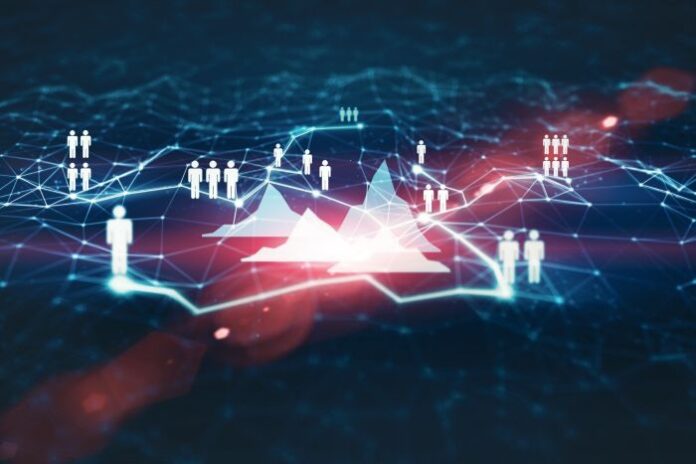Over the past years, B2B lead generation has experienced tremendous shifts.
Businesses require a constant flow of quality leads in today’s fiercely competitive environment. This ensures they do not get left behind.
To keep ahead with lead generation, it isn’t just about having innovative new tools. It’s more about combining the unique human connection with supreme technology.
B2B marketing is being uniquely transformed by AI and automation, supporting teams in a faster and smarter way.
These powerful tools play a gigantic role, but in the end, the approach is all about people.
B2B lead generation is a combination of automation and AI, blended with trusting, meaningful human interaction.
Key Takeaways
- B2B lead generation has evolved from invasive methods to data-driven, personalized communication.
- AI tools enhance prospecting by uncovering patterns and predicting conversion likelihood.
- Automation streamlines follow-ups and outreach without sacrificing quality and human connection.
- The human touch is essential in B2B sales, fostering trust and empathy between businesses.
- Combining AI insights with human interaction creates a successful B2B lead generation strategy.
Table of Contents
1. The Evolution of B2B Lead Generation
In the ‘80s and ‘90s, lead generation banked on mass emails and cold calling, whether physical or via phone calls. These methods lacked the technical analytical targeting available today.
These systems were invasive and tedious. But in today’s world, B2B lead generation is very different; it is data-backed and targeted communication.
It has advanced into a polished, data-driven process. It requires targeted content, personalized outreach, and key relationship development across numerous digital channels.
Analytics tools are used to identify the ideal customer profile (ICP). Campaigns are built utilizing channels like videos, email, and LinkedIn.
When used in collaboration with smart sectionalizing and messaging, LinkedIn and cold email remain the top-performing platforms. This is where a B2B LinkedIn lead generation agency can play a role.
The lead generation from B2B LinkedIn agencies has been critical in assisting businesses to make the needed adjustments.
To link their clients with premium prospects, the agencies use data enrichment tools, automation platforms, and content action plans. This ensures the outreach feels authentically human.
2. AI in Lead Generation: Smarter Prospecting
Artificial Intelligence is changing how companies identify and interact with potential leads.
By analyzing massive datasets, AI tools can uncover patterns and behaviors. These might take human researchers weeks or longer to find.
This enables businesses to:
Pinpoint high-value prospects with precision.
Segment audiences based on behavior, intent, and firmographics.
Predict the likelihood of conversion with lead scoring models.
AI also powers tools that generate personalized email drafts and optimize subject lines. To make it even more incredible, they even suggest the best time to send messages.
The ideal is to have an ongoing pipeline of leads for growth. Thankfully, AI can increase not only leads but also at a speed that maximizes scaling.
But we shouldn’t forget that AI isn’t without its limitations. It lacks subtlety, but we humans make up for that.
A message generated by AI might be ideal in its purpose, but often requires related emotional relevance. This ensures it does not sound, or rather, feel artificial.
AI is not a substitute for human interaction and strategy, but should rather be seen as an incredible booster.
3. Automation: Scaling Outreach Without Losing Quality
Automation takes the repetitive grunt work out of lead generation.
When integrated with CRMs and sales tools, automation can manage follow-up sequences, meeting scheduling, contact tagging and list management. It also manages workflow triggers based on lead actions.
For example, automated follow-ups ensure no prospect slips through the cracks. Data enrichment tools pull in social profiles and company info to personalize outreach at scale.
Sales Development Representative, SDR services often harness automation to streamline efforts. However, the best SDR teams know where to draw the line.
They use automation to deliver timely, relevant messages—without sacrificing the warmth and trust that come from human engagement.
4. The Human Touch: Still the Most Powerful Piece
Even in the age of AI and automation, people buy from people.
Trust, empathy, and relationship-building remain the cornerstones of successful B2B sales.
No algorithm can replicate the power of a genuine conversation. A well-researched message that speaks directly to a prospect’s pain point is also irreplaceable.
Here’s where skilled SDRs shine. They don’t just send emails—they craft stories, ask thoughtful questions, and build rapport.
A message that includes a personal reference to a recent company milestone or mentions a mutual connection will always outperform a generic AI draft.
Examples of high-performing personalization include:
Referencing specific challenges faced by the prospect’s industry
Sharing relevant case studies that resonate with the reader’s role
Using video messages to create face-to-face impact in inboxes
It’s these human touches that transform a lead into a conversation—and eventually, a customer.
5. The Winning Formula: Human-Led, Tech-Enabled
Finding the middle ground between AI and human interaction is the best strategy to generate B2B leads.
AI can give a deeper insight into customer behavior and patterns than humans can. It can also identify the latest trends and personalize communication.
This insight can reveal patterns that might not be noticed by humans. This ability can be a major advantage to sales and marketing teams.
Due to AI’s efficiency, no leads are left behind or not followed up on. The workflow is streamlined, and data is enriched because of it.
Because of automation, repetitive tasks have become a thing of the past. They no longer take up the time of sales or marketing teams. Instead, it allows them to scale their efforts and build their business like never before.
However, automation does not possess emotional intelligence, which carries the risk of communication coming across as mechanized.
The human element comes into play at this point because human interaction, intuition, and empathy are irreplaceable.
Prospects find value in skilled salespeople who can bring tailored, carefully crafted messages. They also bring authenticity to the business table, even if the table is a technical platform.
Technology cannot replace certain social cues. For example, asking the right questions, building trust, and knowing when to follow up are irreplaceable.
When utilizing AI and automation to the fullest while keeping human interaction in the mix, lead generation companies will accomplish the best results.
It’s important to partner with lead-generating companies that have experience and can help you stay relevant in a competitive market.
Conclusion
Generating leads in the B2B market has become a technical, data-driven market with the needed human touch.
Adaptability and authenticity are required to collaborate with the latest cutting-edge tools. They also offer the warmth needed for good business relationships.
Combining the insights of AI, the efficiency of automation, and the genuine connection of human outreach is a recipe for success.
Partnering with an experienced B2B LinkedIn lead generation agency is a no-brainer. It understands the fine balance between technology and human-environment dynamics, ensuring every strategy feels both data-driven and genuinely people-focused.
Generating B2B leads in the future is all about balance.











